Circular 706
Danise Coon, Stephanie Walker, Dennis Lozada, Ivette Guzman, and Paul W. Bosland
College of Agricultural, Consumer and Environmental Sciences, New Mexico State University
Authors: Respectively, Senior Research Specialist, Department of Extension Plant Sciences (EPS); Extension Vegetable Specialist, EPS; Assistant Professor, Department of Plant and Environmental Sciences (PES)/Director, NMSU Chile Breeding Program; Assistant Professor, PES; and Regents Professor Emeritus, New Mexico State University. (Print Friendly PDF)
Introduction
New Mexico State University (NMSU) has the longest-running continuous chile pepper breeding and genetics program in the world. The chile improvement program officially began at the New Mexico College of Agriculture and Mechanic Arts (now NMSU) in 1888 with Dr. Fabián García, NMSU’s first horticulturist. He began breeding for the improved New Mexican pod-type in 1884, and in 1913 he released ‘New Mexico No. 9’. Improvement of chile cultivars for New Mexico through breeding and genetics is a major research priority at NMSU. All New Mexican pod-type chiles grown today gained their genetic base from cultivars first developed at NMSU (Bosland, 2015). Improved cultivars lead to decreases in production and consumer costs, increases in yields and incomes, and improvements in product quality. Historically, a cultivar’s release date may be different than the published dates because publishing the cultivar release depends on a journal’s reviewing and publishing schedule. It can take several years before a cultivar is seen in print.
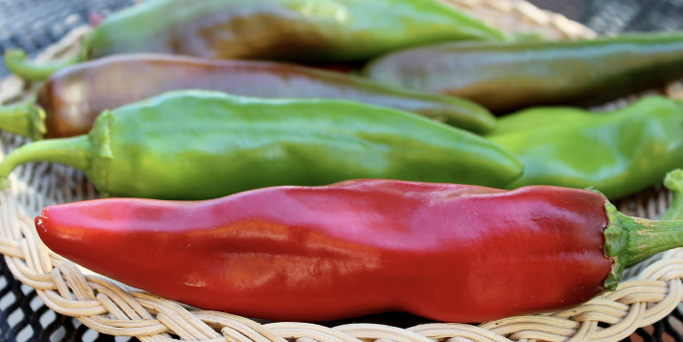
When Dr. García released ‘New Mexico No. 9’ (Garcia, 1921), it was not only the first chile cultivar released from NMSU but also introduced the New Mexican pod-type to the world. Dr. García began improving the local chiles grown by Hispanic gardeners around Las Cruces, NM. He made hybridizations between Mexican cultivars like the pasilla chile pepper, chile negro varieties, Colorado chile peppers, and New Mexico landrace chiles like the immensely popular ‘Chimayó’. Today, the New Mexican pod-type is often mistakenly called ‘Anaheim’. Chiles such as ‘NuMex Big Jim’ and ‘Anaheim’ are actually cultivars within the New Mexican pod-type. ‘Anaheim’ seed originated in New Mexico and was taken to Anaheim, CA, where it has remained for many years, developing site-specific traits and becoming a variety of its own. New Mexico also produces cultivars of chile peppers for specific industrial uses, including paprika, which is a mild or no-heat New Mexican pod-type. NMSU chile breeders have not only focused on increasing yields but also better disease resistance, higher flavor and nutraceutical compounds, high color compounds, niche markets, and developing New Mexican pod-type chile peppers for mechanized harvest.
Chile pepper’s most recognizable trait is heat, which is measured using high-performance liquid chromatography (HPLC), and the heat level is indicated in Scoville Heat Units (SHU). Capsaicinoids, chemical compounds produced in glands or vesicles on the fruit’s placenta, produce the heat sensation when consumed. While seeds are not the source of heat, they may come in contact with the capsaicinoids because of their proximity to the placenta. Genetics, weather, growing conditions, and fruit age affect capsaicinoid content and thus the heat level. Plant breeders selectively develop cultivars with varying degrees of heat; however, capsaicinoid content is affected by genetics and environmental conditions. Growers may subject their plants to different amounts of stress that can produce hotter pods. Consequently, the chile pepper heat levels listed in Table 1 are averages that can vary by year and growing location.
This publication describes cultivars released by NMSU between 1913 and 2022. Seed for most NMSU cultivars is available from the Chile Pepper Institute (http://cpi.nmsu.edu).
|
Table 1. Chile Cultivars Developed at New Mexico State University and their Pod-types, Relative Heat Level in Scoville Heat Units (SHU), and the Year of Official Release |
|||
|
Cultivar |
Pod-type |
Heat Level (SHU) |
Year |
|
New Mexico No. 9 |
New Mexican |
1,500 |
1913 |
|
New Mexico 6/ |
New Mexican |
900 |
1950 |
|
Sandia |
New Mexican |
6,500 |
1956 |
|
Rio Grande 21 |
New Mexican |
700 |
1967 |
|
NuMex Big Jim |
New Mexican |
6500 |
1975 |
|
Española Improved |
New Mexican |
2,500 |
1984 |
|
NuMex R Naky |
New Mexican |
350 |
1985 |
|
NuMex Eclipse |
New Mexican |
500 |
1988 |
|
NuMex Sunrise |
New Mexican |
500 |
1988 |
|
NuMex Sunset |
New Mexican |
500 |
1988 |
|
NuMex Conquistador |
New Mexican |
0 |
1989 |
|
NuMex Joe E. Parker |
New Mexican |
900 |
1990 |
|
NuMex Sweet |
New Mexican |
300 |
1990 |
|
NuMex Garnet |
New Mexican |
160 |
2004 |
|
NuMex Heritage 6-4 |
New Mexican |
1,500 |
2008 |
|
NuMex Heritage Big Jim |
New Mexican |
9,500 |
2008 |
|
NuMex Sandia Select |
New Mexican |
9,500 |
2014 |
|
NuMex R. Vince Hernandez |
New Mexican |
500 |
2015 |
|
NuMex Odyssey |
New Mexican |
300 |
2021 |
|
NuMex Vaquero |
Jalapeño |
33,000 |
1997 |
|
NuMex Piñata |
Jalapeño |
52,000 |
1998 |
|
NuMex Primavera |
Jalapeño |
8,500 |
1998 |
|
NuMex Jalmundo |
Jalapeño |
17,000 |
2010 |
|
NuMex Lemon Spice |
Jalapeño |
25,000 |
2015 |
|
NuMex Orange Spice |
Jalapeño |
79,000 |
2015 |
|
NuMex Pumpkin Spice |
Jalapeño |
22,000 |
2015 |
|
NuMex Sunburst |
de Árbol |
* |
1991 |
|
NuMex Sunflare |
de Árbol |
* |
1991 |
|
NuMex Sunglo |
de Árbol |
* |
1991 |
|
NuMex Bailey Piquin |
Piquín |
100,000 |
1991 |
|
NuMex Centennial |
Ornamental |
* |
1988 |
|
NuMex Twilight |
Ornamental |
* |
1993 |
|
NuMex Christmas |
Ornamental |
* |
2007 |
|
NuMex Halloween |
Ornamental |
* |
2007 |
|
NuMex Memorial Day |
Ornamental |
* |
2007 |
|
NuMex St. Patrick’s Day |
Ornamental |
* |
2007 |
|
NuMex Thanksgiving |
Ornamental |
* |
2007 |
|
NuMex Valentine’s Day |
Ornamental |
* |
2007 |
|
NuMex April Fools’ Day |
Ornamental |
* |
2010 |
|
NuMex Chinese New Year |
Ornamental |
* |
2010 |
|
NuMex Cinco de Mayo |
Ornamental |
* |
2010 |
|
NuMex Easter |
Ornamental |
* |
2010 |
|
NuMex Earth Day |
Ornamental |
* |
2013 |
|
NuMex Summer Solstice |
Ornamental |
* |
2014 |
|
NuMex Veterans Day |
Ornamental |
* |
2014 |
|
NuMex Columbus Day |
Ornamental |
* |
2016 |
|
NuMex Twinkle |
Ornamental |
* |
2022 |
|
NuMex Mirasol |
Mirasol |
* |
1993 |
|
NuMex Nematador |
Cayenne |
16,000 |
2003 |
|
NuMex Las Cruces |
Cayenne |
17,400 |
2010 |
|
NuMex Suave Orange |
Habanero |
335 |
2004 |
|
NuMex Suave Red |
Habanero |
774 |
2004 |
|
NuMex Trick-or-Treat |
Habanero |
0 |
2015 |
|
NuMex NoBasco |
Tabasco |
0 |
2020 |
|
NuMex LotaLutein |
Serrano |
31,500 |
2020 |
|
NuMex CaJohns |
Serrano |
3,500 |
2021 |
|
* Heat levels not measured. |
|||
New Mexico No. 9
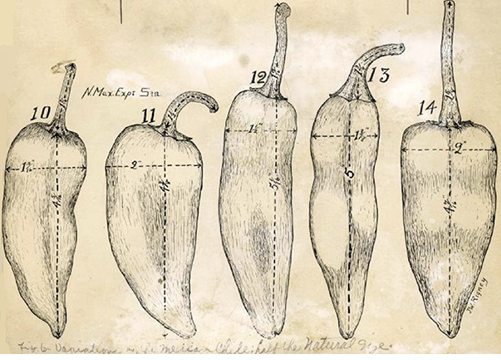
Figure 1. Dr. García had an artist draw the selections he made while breeding for the new ‘New Mexican’ type chile pepper. ‘New Mexico No. 9’ was very similar to #12 in this picture.
Before Dr. García developed the New Mexican pod-type, there was no control over the genetic composition of the chile seeds planted, and therefore farmers could never predict the size or heat level of the pods. Dr. García had an idea that if he made the chiles milder and more uniform, consumption would increase among the non-Hispanic population. He had two colors of chile to choose from: red (“colorado”) or dark brown (“negro”). He chose the red strain. This was lucky for New Mexico because 100 years later, paprika chile used as a red coloring agent has become an important part of the New Mexico chile industry. He improved native chile by hybridization and selection. His goal was to produce a chile cultivar that was “larger, smoother, fleshier, more tapering and included a shoulder-less pod for canning purposes” (Garcia, 1921). He selected 14 chile accessions growing in the Las Cruces area from three types: “pasilla” (dark brown), “colorado” (red), and “negro” (dark brown) chiles.
After nine years of testing, ‘New Mexico No. 9’ was deemed the most successful (Figure 1), and Dr. García wrote that it had “proven to be the best.” He said, “While ‘New Mexico No. 9’ is not quite as hot as most of the unimproved varieties, it seems to be hot enough. Most of the plants produce pods having the characteristics desired, but there are always some plants in the field which tend to revert back and consequently, it is necessary to select the seed in the field.” Heat of ‘New Mexico No. 9’ is estimated to have been in the range of 1,000 to 1,500 Scoville Heat Units (SHU) because it was reported to be twice as hot as ‘New Mexico 6’ (Harper, 1950). Dr. García did not realize that his chile lines were cross-pollinating and causing new variability. In retrospect, it was a happy accident that he picked the pasilla, colorado, and negro types. They probably intercrossed and produced progeny that contained novel gene combinations, allowing him to select for the new pod-type and cultivar.
Dr. García also said, “No special effort [has been] made to produce a blight [chile wilt] resistant strain at this time. Naturally in the work of rouging and selection, incidentally the hardier and more blight resistant plants were also selected. While this [chile] variety, at the present time, is not entirely immune to the blight, it does show that it is not so susceptible to the wilt as the unimproved varieties. It is hoped that in the near future more intensive work can be undertaken to produce and establish an absolutely blight resistant variety.” ‘New Mexico No. 9’ had uniform heat and a standard pod size and shape, making it the chile standard until 1950, and helped establish the Mexican food industry in the United States.
New Mexico 6/New Mexico 6-4
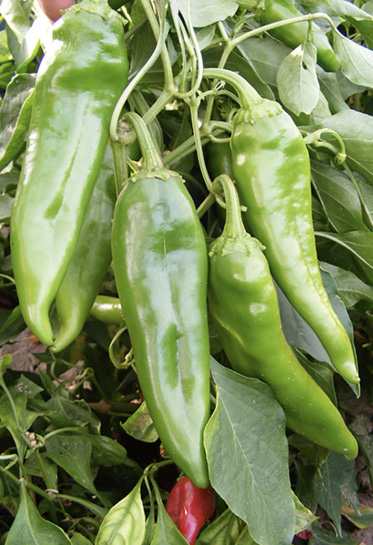
Figure 2. ‘New Mexico 6-4’ pods in the green stage.
In 1950, Dr. Roy Harper released ‘New Mexico 6’ from a selection made in 1947 from an undesignated local chile (Harper, 1950). Its dry chile yield was 23% greater than ‘New Mexico No. 9’. ‘New Mexico 6’ was particularly well suited for the processing industry and for producing green chile for the fresh market. It produced a high proportion of large, smooth, thick-fleshed pods that ranged from 6 to 8 inches in length and averaged 2 inches in width (Figure 2). The pods were long-elliptical to oblong in shape and bluntly pointed, with small bases in proportion to their size. The shoulders of the green pods were generally well-rounded and smooth. ‘New Mexico 6’ produced a higher proportion of well-shaped pods than ‘Anaheim’. The pods were a uniform medium green in color. The fruit had thick walls and dried more slowly than those of ‘New Mexico No. 9’. ‘New Mexico 6’ ranged in heat level from 700 to 900 SHU—half that of ‘New Mexico No. 9’. Under average conditions, ‘New Mexico 6’ plants branched lower and did not grow as tall as ‘New Mexico No. 9’.
In 1957, ‘New Mexico 6’ was re-developed and made less hot, then renamed ‘New Mexico 6-4’. It was released to a local green chile processor, and is still a popular chile cultivar today. ‘New Mexico 6-4’ matures earlier than ‘New Mexico No. 9’. The fruit are thick-fleshed, medium green, very smooth with well-rounded shoulders, blunt-tipped, and suitable for canning.
Sandia (Sandia A)
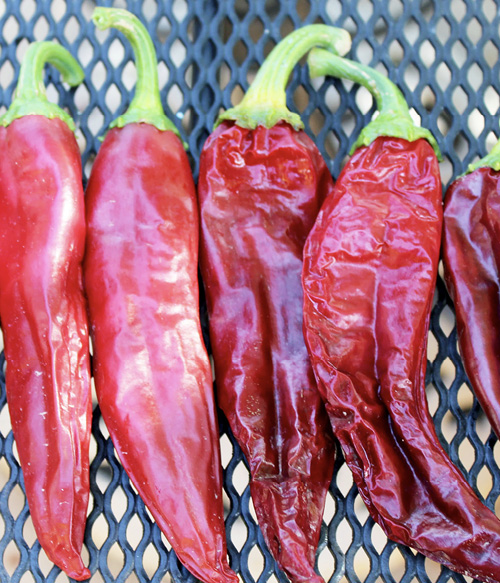
Figure 3. ‘Sandia’ pods in the red mature stage.
In 1956, Dr. Harper released what was originally called ‘Sandia A’. Later, in 1967, this cultivar was renamed ‘Sandia’ by the New Mexico Crop Improvement Association. The cultivar originated from a hybridization between ‘New Mexico No. 9’ and a California Anaheim-type cultivar, and matured earlier than ‘New Mexico No. 9’. ‘Sandia’ produces long, medium-wide pods with medium-thick walls (Figure 3). Pods are straight with a slightly roughened surface, but devoid of severe folds that were commonly present on ‘Anaheim’. ‘Sandia’ pods are slightly flattened and have the greatest width toward the stem end, its shoulders are rounded, and the pods taper gradually to the blossom end. The pod’s flesh portion averages 63% of the total weight of the dry red fruit; this is similar to ‘New Mexico No. 9’ and slightly less than the average for ‘Anaheim’. Green pod yields of ‘Sandia’ average 12,207 lb/acre, with average yields 33% higher than those of ‘New Mexico No. 9’, but less than ‘New Mexico 6’. ‘Sandia’ plants set fruit well on the lower nodes during high-temperature periods. Plants are upright in growth habit, and average 24 to 30 inches in height. The cultivar is considered hot, with a heat level of 1,500 to 2,000 SHU, and is popular with home gardeners.
Rio Grande 21
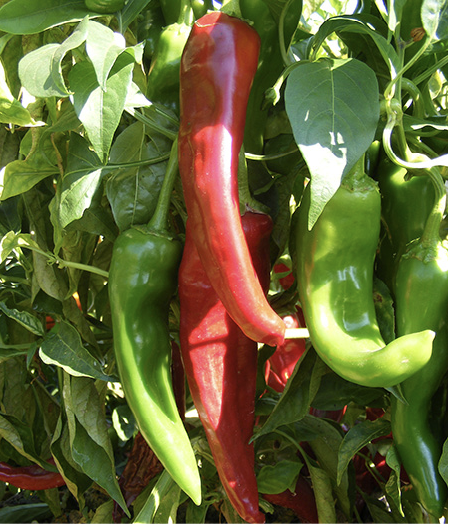
Figure 4. ‘Rio Grande 21’ mature pods in the green and red stages.
Dr. Harper released ‘Rio Grande 21’ in 1967 (Harper, 1967) from a hybridization between ‘New Mexico 6’ and ‘Anaheim’. The cultivar is similar in maturity to ‘New Mexico No. 9’, with large, smooth green pods and thick flesh. Mature succulent pods are slightly flattened and elliptical in shape, with a slight longitudinal depression toward the blossom end (Figure 4). The stem end is cylindrical and without prominent shoulders, whereas the blossom end tapers to a medium point and does not have prominent lobes. ‘Rio Grande 21’ mature pods average 6.70 inches in length and 1.73 inches at their widest dimension. ‘Rio Grande 21’ averages 8.5 mature green and 44.3 dry red pods per pound. The fleshy, dry portion of the pod, exclusive of stem and seeds, averages 66% of the dry red fruit’s total weight—higher than the average for either ‘Anaheim’ or ‘New Mexico No. 9’. The cultivar’s green pod yield averages 15,436 lb/acre. ‘Rio Grande 21’ plants show a slight tendency for poor fruit set during periods of extremely high temperatures. The lower nodes on some plants can be devoid of fruit, and heavy fruit set on the upper nodes results in a spreading-type plant that is normally 24 to 32 inches in height. Today, this cultivar is not widely grown in New Mexico. Heat of ‘Rio Grande 21’ was measured at 900 SHU.
NuMex Big Jim
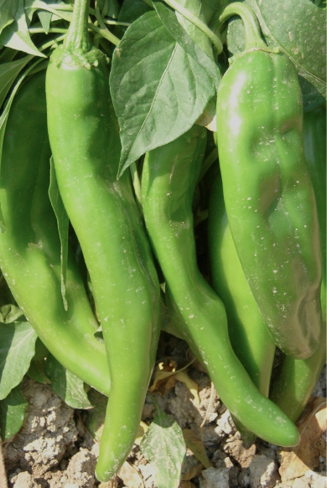
Figure 5. ‘NuMex Big Jim’ large pods in the mature green stage.
Released by Dr. Roy Nakayama in 1975, this cultivar is listed in The Guinness Book of Records as the world’s largest chile (Nakayama, 1975). Mature green fruits are long, thick, smooth, fleshy, moderately flattened, and taper to a hook at the apex (Figure 5). Mature green fruit averages 7.68 inches long and 1.89 inches wide. It has a slightly higher heat level than ‘New Mexico 6-4’, but not as high as ‘Rio Grande 21’ or ‘Sandia’. A unique trait of ‘NuMex Big Jim’ is that heat levels vary from plant to plant, with some plants producing mild pods and others producing hot pods. In addition to its use as green chile, the fruit is adapted for dry red chile products, and is higher in extractable red color than ‘New Mexico 6-4’. Heat levels of ‘NuMex Big Jim’ are hotter than previous cultivars and measure at 6,500 SHU. Mature green fruit color ranges from light to medium green. Fruit set is more concentrated and is adapted to mechanical harvesting, with an average yield of 31,761 lb/acre for green chile. Plant height averages 16 to 26 inches. Because of the large pods, the cultivar is a favorite of home gardeners and chefs for making chiles rellenos, a stuffed chile pod.
Española Improved
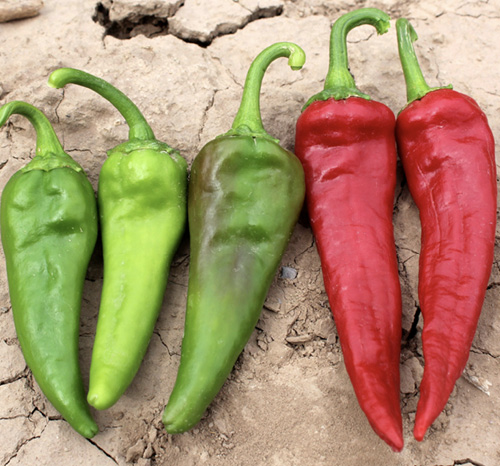
Figure 6. Green and red pods of ‘Española Improved’.
Dr. Frank Matta and Dr. Nakayama released ‘Española Improved’ in 1984 (Matta and Nakayama, 1984), a hybridization between ‘Sandia’ and a strain of New Mexico landrace chile pepper (Walker and Havlik, 2016). It is an early maturing red chile cultivar (155 days) that is adapted to the shorter growing season in north-central New Mexico. It produces long, smooth, fleshy fruit with broad shoulders tapering to a sharp point at the apex (Figure 6). This shape is common among native pod-types in the area. The mature, dark green fruit of ‘Española Improved’ average 6.18 inches long and 1.23 inches wide. Relatively high green pod yields, fruit size, and marketable characteristics (long, smooth pods) make it superior to native strains for use as green chile in northern New Mexico. Fruit are smooth, well-shaped, and adapted for dry red products, with high heat levels of 1,500 to 2,000 SHU. It is a popular cultivar for northern New Mexico and other areas that require an early maturing cultivar.
NuMex R Naky
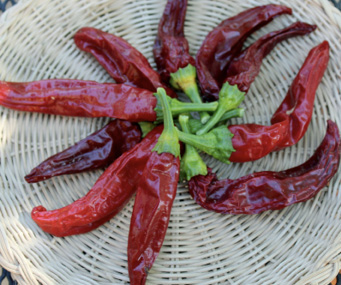
Figure 7. Mature red pods of ‘NuMex R Naky’.
Dr. Nakayama released this cultivar in 1985, and named it after his wife, Rose (Nakayama and Matta, 1985). In its pedigree it has ‘Rio Grande 21’, ‘New Mexico 6-4’, Bulgarian paprika, and an early maturing native type. It sets fruit under high temperatures and low humidity and yields 30,930 lb/acre, significantly higher than ‘New Mexico 6-4’ (22,783 lb/acre). When red color was measured using the American Spice Trade Association (ASTA) method, it had a color rating of 188 ASTA, which was better than ‘New Mexico 6-4’ (127 ASTA) (Figure 7). The heat level was 260 to 760 SHU, making it a very mild cultivar. The pod is slightly longer and wider than ‘New Mexico 6-4’. ‘NuMex R Naky’ has been used as a paprika cultivar in New Mexico because of its low heat level. Paprika is defined in the United States as red pepper powder with undetectable or low heat.
NuMex Sunrise, NuMex Sunset, and NuMex Eclipse

Figure 8. ‘NuMex Eclipse’ (brown), ‘NuMex Sunset’ (orange), and ‘NuMex Sunrise’ (yellow) are used for full-sized colorful ristras.
These cultivars were released in 1988 by Dr. Paul Bosland, Dr. Jaime Iglesias, and Dr. Steve Tanksley. The cultivars were unique in providing alternative mature fruit colors in the New Mexican pod-type (Bosland et al., 1990). ‘NuMex Sunrise’, ‘NuMex Sunset’, and ‘NuMex Eclipse’ have fruits that start green and then turn yellow, orange, and brown, respectively (Figure 8). They are used primarily as ornamental chiles. It has been a New Mexican tradition to harvest and string mature red chile pods into ristras that are hung near the entrances of homes as symbols of hospitality and good luck. Only chile types that dehydrate sufficiently to eliminate rotting can be used to make ristras. All three cultivars originated from a hybridization between ‘Permagreen’ (a green bell pepper) and ‘New Mexico 6-4’. This trio of chiles is considered very mild, with heat measured at 500 SHU, similar to ‘New Mexico 6-4’.
NuMex Conquistador
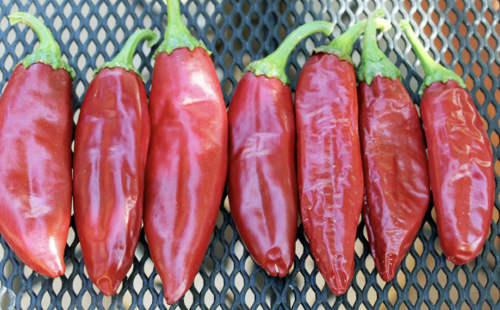
Figure 9. ‘NuMex Conquistador’ red pods.
This cultivar, released in 1989, originated as a single-plant selection from ‘New Mexico 6-4’, which is a hot cultivar (Bosland et al., 1991). ‘NuMex Conquistador’, a no-heat cultivar, is considered to be a paprika-type chile. HPLC analysis revealed that capsaicinoid levels are less than 10 parts per million (ppm), which is below the level that humans can sense as heat. The fruits have round shoulders, a pointed tip, a smooth surface, thick flesh, and two locules (cells) (Figure 9). Mean fruit length is 6.18 inches and fruit weight is 2.76 ounces. Plants have a single, strong main stem with sturdy branches. Mean plant height is 29.5 inches and plant width is 25.0 inches, which is similar to that of ‘New Mexico 6-4’ and ‘NuMex R Naky’. This cultivar is used as a paprika cultivar in the mature red stage; in the green stage, it is stuffed with jalapeño flavored cheese to produce chiles rellenos with uniform heat levels.
NuMex Sweet
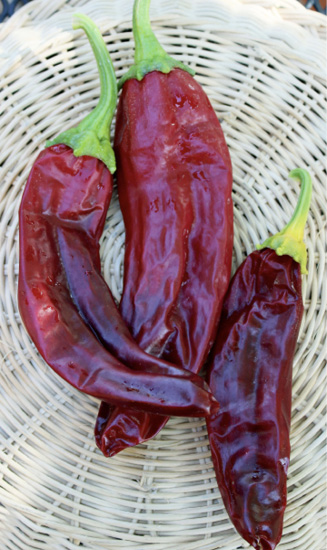
Figure 10. ‘NuMex Sweet’ paprika-type pods.
A paprika-type or low-heat chile that was released in 1990, ‘NuMex Sweet’ originated as a single-plant selection from a field planted to an open-pollinated population of ‘New Mexico 6-4’, a hot New Mexican-type chile cultivar (Bosland et al., 1993b). A single plant was increased in the greenhouse after three generations of self-pollinating and tested for two years in field trials. This cultivar incorporates the plant and fruit characteristics of an ideal paprika-type chile, as determined by paprika processors. ‘NuMex Sweet’ is a low-heat New Mexican-type chile with round shoulders, a pointed tip, smooth fruit, two locules, and high color (157 ASTA) (Figure 10). It exhibits less variability for horticultural traits than ‘New Mexico 6-4’ or ‘NuMex R Naky’. The plant has a single, strong main stem, and sturdy branches that provide foliage cover for sunscald protection and support for an excellent fruit set. Plant height and width of 24 and 30 inches, respectively, are similar to ‘NuMex Conquistador’ and ‘NuMex R Naky’. Fruit thickness of ‘NuMex Sweet’ is less than ‘NuMex Conquistador’ or ‘NuMex R Naky’, allowing for greater “dry down” in the field. The heat level of ‘NuMex Sweet’ is 300 SHU. Its most remarkable characteristic is the outstanding yield of a single harvest of dry red chile at 7,781 lb/acre. This yield is 40% greater than ‘NuMex R Naky’, a standard New Mexico paprika cultivar.
NuMex Joe E. Parker
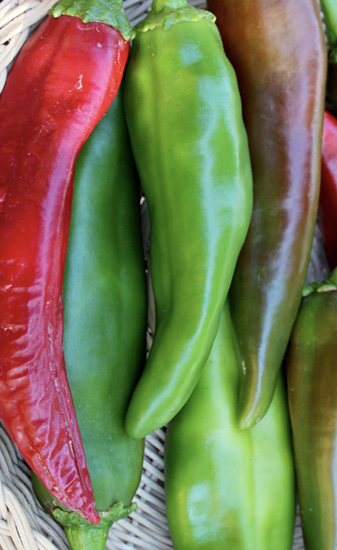
Figure 11. ‘NuMex Joe E. Parker’, a very popular green chile cultivar.
This cultivar was named to honor Mr. Joe E. Parker of Las Cruces, NM, a 1950 graduate of NMSU’s College of Agriculture and Home Economics (Bosland et al., 1993a). Mr. Parker assisted in evaluating this specific selection. ‘NuMex Joe E. Parker’, released in 1990, originated as a single-plant selection from a field planted to an open-pollinated population of ‘New Mexico 6-4’, and is recommended for green and red chile production in southern New Mexico (Figure 11). This cultivar exhibits less variability for horticultural traits than ‘New Mexico 6-4’, the standard chile cultivar for southern New Mexico. ‘NuMex Joe E. Parker’ plants have single, strong main stems and are uniformly branched, providing foliage cover for sunscald protection and support for an excellent fruit set. ‘NuMex Joe E. Parker’ has a plant height between 24 and 30 inches, and there are no significant differences between it and ‘New Mexico 6-4’ for heat levels, fruit width, green fruit color, or days to maturity (149 days). The major features of this cultivar are green and red chile yield, fruit wall thickness, and red chile yield after a harvest of green fruit, which are all better than ‘New Mexico 6-4’. The increased fruit set after the first green harvest results in a high “red after green” dry fruit yield that gives the grower the choice of either continuous picking of a green crop, or a green chile harvest followed by a later red fruit harvest. After peeling, a thicker fruit wall produces a higher “pack-out” yield of green chile compared to thin-walled cultivars. ‘NuMex Joe E. Parker’ has a high percentage (88%) of two-locule fruit, a desirable characteristic for canning whole pods. A 122 ASTA red color is similar to that of ‘New Mexico 6-4’. ‘NuMex Joe E. Parker’ has very high levels of vitamin C in the green mature stage, and is resistant to tobacco mosaic virus (TMV). Heat levels are in the mild range at 900 SHU.
NuMex Garnet
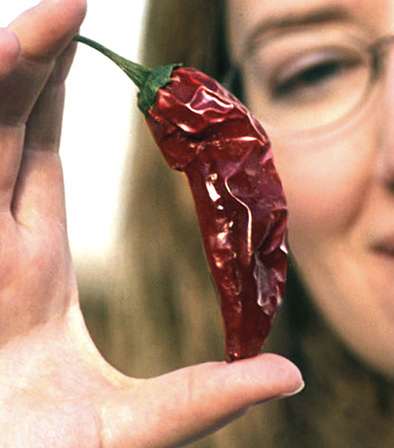
Figure 12. ‘NuMex Garnet’ dried paprika pod.
‘NuMex Garnet’ was released in 2004 as an open-pollinated paprika-type chile with high extractable color (303 ASTA), and at 160 SHU is considered a very mild chile pepper (Walker et al., 2004). ‘NuMex Garnet’ originated from a hybridization between ‘B-18’ (a mild, indeterminant paprika cultivar) and ‘TAES PA-5’ (a New Mexican-type cultivar). ‘NuMex Garnet’ was selected for its compact growth habit, high yields, high extractable color, high dry matter in fruit, and low heat levels. It is predominantly suited for use as a natural red colorant in the form of powder or oleoresin. The fruit are not as wide but are longer than ‘B-18’, while the fruit wall thickness is the same as ‘B-18’ and ‘NuMex Conquistador’. The pods average 1.5 inches wide and 6.2 inches long, with wall thickness of about 1/4 inch (Figure 12). ‘NuMex Garnet’ is an excellent candidate for mechanical harvesting because of the ease of stem detachment and fruit dispersal on the plant.
NuMex Heritage Big Jim
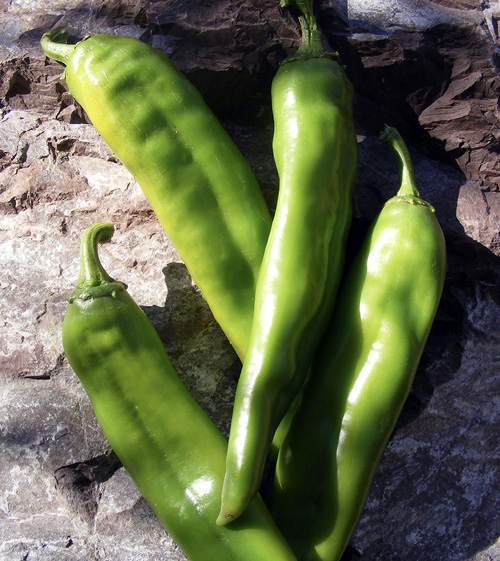
Figure 13. ‘NuMex Heritage Big Jim’, an improved and more flavorful ‘Big Jim’ cultivar.
Original seed of ‘NuMex Big Jim’ was obtained from the National Seed Storage Lab in Fort Collins, CO, with a goal of developing a more uniform, thick-walled chile with a consistent heat level. Members of the New Mexico Chile Commission made selections from 40 breeding lines of the original ‘NuMex Big Jim’. A total of six of the best-performing lines were chosen and re-tested. Selections were made based on the horticultural characteristics that were most important to the New Mexico chile industry, including high yield, uniform heat level, improved fruit qualities, easy de-stemming, and, most importantly, a traditional flavor. ‘NuMex Heritage Big Jim’ has large, flattened, thick-walled mature green fruit with round shoulders (Figure 13), has a very hot heat level at 9,500 SHU, and is more uniform than the original ‘NuMex Big Jim’.
NuMex Heritage 6-4
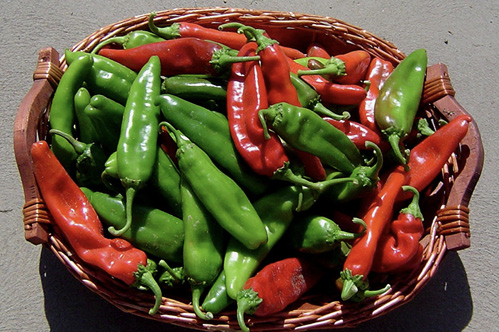
Figure 14. ‘NuMex Heritage 6-4’, an improved and more flavorful cultivar.
In 2002, original seed of ‘New Mexico 6-4’ was obtained from the National Seed Storage Lab in Fort Collins, CO, to develop a genetically superior chile cultivar that would help New Mexico growers compete in the global market, as well as capture the original taste and flavor of ‘New Mexico 6-4’. Similar to the development of ‘NuMex Heritage Big Jim’, the New Mexico Chile Commission members made selections from 27 breeding lines of the original ‘New Mexico 6-4’, and six of the best-performing lines were chosen and re-tested. Selections were made based on the horticultural characteristics that were most important to the New Mexico chile industry, including high yield, uniform heat level, improved fruit qualities, easy de-stemming, and, most importantly, a traditional flavor. ‘NuMex Heritage 6-4’ is recognized for producing pods that range from 6 to 8 inches in length and have a smooth, thick flesh (Bosland, 2012) (Figure 14), with a heat level of 1,500 SHU and yields higher than the original ‘New Mexico 6-4’.
NuMex Sandia Select
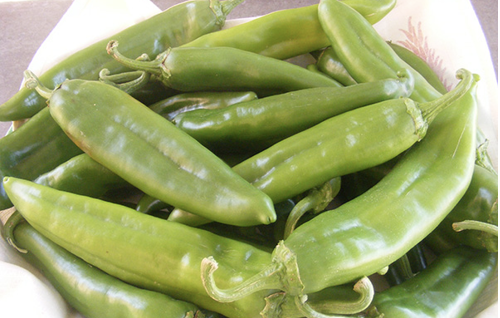
Figure 15. ‘NuMex Sandia Select’, an improved cultivar with a thicker flesh than ‘Sandia’.
New Mexico green chile growers and processors approached the NMSU chile breeding program and requested an improved ‘Sandia’ by selecting for a thicker-walled green pod with a relatively high heat level and increased yield. ‘NuMex Sandia Select’ plants have a single, strong main stem and are uniformly branching, providing foliage cover for sunscald protection and support for an excellent fruit set, but there is no difference in plant height when compared to ‘Sandia’ (Bosland and Coon, 2014). ‘NuMex Sandia Select’ has significantly higher yield—up to 40%—than the original ‘Sandia’. ‘NuMex Sandia Select’ produced green mature pods that are longer in length than ‘Sandia’ (Figure 15), with a wall that is smoother and thicker. The calyx is easily removed by hand, and the heat level (an important quality trait) was measured to be 9,500 SHU, proving to be a hot cultivar in the New Mexican pod-type, just like the original ‘Sandia’.
NuMex R. Vince Hernandez

Figure 16. ‘NuMex R. Vince Hernandez’, a high-ASTA red paprika cultivar.
‘NuMex R. Vince Hernandez’ originated from a hybridization between two breeding lines, 189W05 and 25W05. The breeding line 189W05 was developed in 2015 from a hybridization of ‘Sonora’, an open-pollinated cultivar commonly grown for paprika processing, and an unidentified chile pepper line sourced from Zimbabwe, Africa. ‘NuMex R. Vince Hernandez’ provides significantly greater dry red yield compared to ‘LB-25’, and exhibits improved drying efficiency in furrow-irrigated plots (Walker, 2015). Heat level is not significantly different from ‘LB-25’, and the average heat level for ‘NuMex R. Vince Hernandez’ is less than the maximum of 500 SHU accepted by the chile industry for a paprika-type chile pepper. The average extractable pigment for ‘NuMex R. Vince Hernandez’ is 250 ASTA (Figure 16).
NuMex Odyssey

Figure 17. ‘NuMex Odyssey’, an improved cultivar for mechanical harvesting.
Released in early 2021, ‘NuMex Odyssey’ is bred to be efficient for mechanical harvest of green fruit (Walker et al., 2021). This cultivar is an open-pollinated New Mexican pod-type for green chile pepper processing. ‘NuMex Odyssey’ was developed with an emphasis on traits critical for efficient mechanical harvest with an inclined double helix-type picking mechanism. These traits include a high percentage of plants with single stems, a higher height to fruit set (main bifurcation), and reduced force to remove fruit from the plants. ‘NuMex Odyssey’ possesses traditional New Mexican green chile flavor and low heat (300 SHU). It provides a higher percentage of mechanically harvested, marketable green chile fruit without mechanical damage compared to current industry-standard New Mexican-type green chile pepper cultivars. The fruit width is 1.7 inches, length is 7.1 inches, and pericarp thickness is 0.1 inch (Figure 17). ‘NuMex Odyssey’ is recommended for direct sowing in the spring in southern and central New Mexico.
NuMex Vaquero
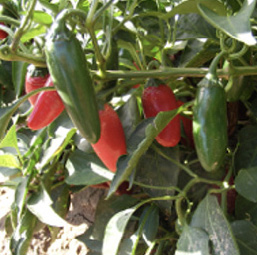
Figure 18. ‘NuMex Vaquero’, an improved disease-resistant jalapeño cultivar.
‘NuMex Vaquero’ is an open-pollinated jalapeño that yields very well in southern New Mexico. Released in 1997 by Dr. Bosland and Dr. Eric Votava, ‘NuMex Vaquero’ has in its pedigree ‘Early Jalapeno’, ‘TAM Jalapeno’, and ‘Criollo de Morelos 334’. ‘Criollo de Morelos 334’ is a Phytophthora blight-resistant landrace from Mexico. ‘NuMex Vaquero’ pods are 2.5 inches long, which is similar to ‘Mitla’ and ‘TAM Jalapeno’, and is green without purpling. It has a smooth skin (no corkiness), a blunted tip, rounded shoulders, multiple locules, and uniform heat (Figure 18). Fruit are almost 1 inch wide. Heat levels of ‘NuMex Vaquero’ are 33,000 SHU, similar to ‘Early Jalapeno’, and it has traditional jalapeño flavor with more sweetness. At the third node, the plants are about 6 inches tall and 19 inches wide, and yield 24,000 lb/acre, the same as the F1 hybrid jalapeño ‘Mitla’. A striking feature of ‘NuMex Vaquero’ is its resistance to Phytophthora blight. It was tested for resistance to both foliar blight and root rot, and the tests indicated that ‘NuMex Vaquero’ possessed resistance to Phytophthora root rot races 2 and 3 and Phytophthora foliar blight race 2.
NuMex Piñata
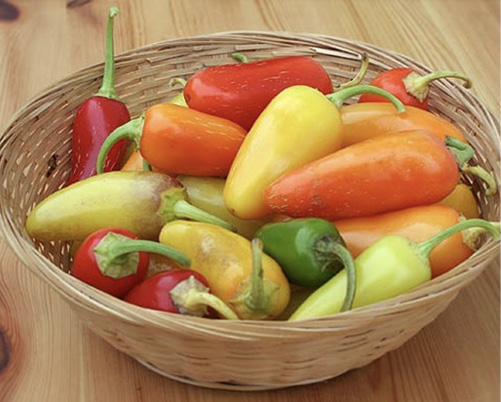
Figure 19. ‘NuMex Piñata’, a colorful jalapeño cultivar.
Released in 1998, the jalapeño cultivar ‘NuMex Piñata’ originated spontaneously in the cultivar ‘Early Jalapeno’ (Votava and Bosland, 1998). ‘NuMex Piñata’ is unique in the transition of colors the fruit undergo as they mature. Immature fruit are light green and mature to yellow, orange, and finally red (Figure 19). The fruit color of standard jalapeño cultivars changes from green to red. The foliage of ‘Early Jalapeno’ and other jalapeño cultivars is dark green, while ‘NuMex Piñata’ has luteous (yellowish) foliage. The inheritance of the foliage color and fruit color transition phenotype of ‘NuMex Piñata’ is due to a single homozygous recessive gene (Votava et al., 2000). The plant growth habit of ‘NuMex Piñata’ is smaller and tends to decline earlier in the season due to the lack of chlorophyll produced by the foliage. ‘NuMex Piñata’ is a unique jalapeño for making colorful salsa because it has kept the natural flavors and aromas of traditional jalapeños and is considered hot, with a heat level of 52,000 SHU. All plant and fruit characteristics, including plant height, yield, and pod width, are not significantly different from ‘Early Jalapeno’. One difference is pod length, which was longer than ‘Early Jalapeno’.
NuMex Primavera
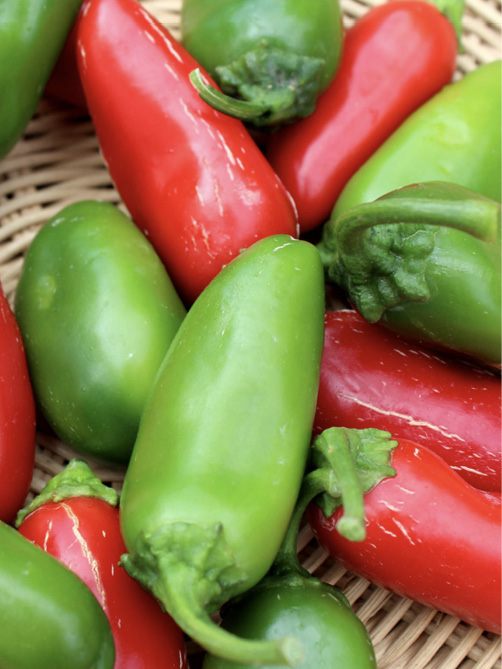
Figure 20. ‘NuMex Primavera’, an improved milder jalapeño cultivar.
‘NuMex Primavera’ is an open-pollinated jalapeño cultivar that was developed using a pedigree breeding method that included several generations of hybridizations, selfing, and repeated single-plant selection (Bosland and Votava, 1998). During each generation, selections were made based on the horticultural characteristics deemed important to the production and processing industries, including easy calyx detachment, dark green color with the absence of anthocyanin, little to no corkiness, and multiple locules. The fruit have rounded shoulders and a semi-pointed tip that is characteristic of the standard jalapeño shape (Figure 20). ‘NuMex Primavera’ displays a uniformly mild heat level at 8,500 SHU, much milder than industry-standard jalapeños. ‘NuMex Primavera’ fruit are 2 inches long and 1 inch wide, and wall thickness is less than 0.25 inch. Plant height is 6.5 inches and plant width is 15 inches, with yields of 16,591 lb/acre in the field. ‘NuMex Primavera’ is a favorite of home gardeners because of its mild heat and traditional flavors and aromas.
NuMex Jalmundo
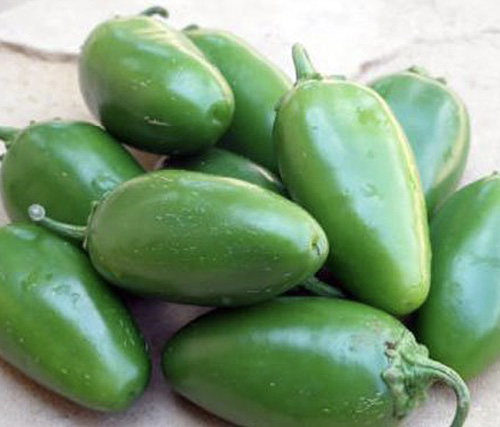
Figure 21. ‘NuMex Jalmundo’, a jumbo jalapeño with high yields.
‘NuMex Jalmundo’ originated from a hybridization between ‘Keystone Resistant Giant’ (a bell pepper) and ‘Early Jalapeno’. ‘NuMex Jalmundo’ is a jumbo-type jalapeño pepper perfect for poppers, but it also has a fair amount of heat. ‘NuMex Jalmundo’ produces excellent yields with jumbo-sized pods that are 3.7 inches long and 1.4 inches wide (Figure 21). The pods mature from green to red. ‘NuMex Jalmundo’ has a per-pod weight greater than ‘Early Jalapeno’, but equal to the F1 hybrid ‘Grande’. Its yield of 30 tons/acre was equal to that of ‘Grande’. ‘NuMex Jalmundo’ is considered to have a medium heat level at 17,000 SHU on a dry weight basis.
NuMex Orange Spice, NuMex Pumpkin Spice, and NuMex Lemon Spice

Figure 22. ‘NuMex Orange Spice’, ‘NuMex Pumpkin Spice’, and ‘NuMex Lemon Spice’, a trio of differently colored jalapeños.
Colorful vegetables provide high-value products to a growing market of upscale consumers, and in turn furnish opportunities for small-scale farmers to make a transition from traditional production of low-value commodities toward the production of produce with greater value. ‘NuMex Lemon Spice’ (bright yellow), ‘NuMex Orange Spice’ (bright orange), and ‘NuMex Pumpkin Spice’ (pumpkin-orange) jalapeños originated from hybridization between ‘Permagreen’ bell pepper and ‘Early Jalapeno’ in 1995 (Bosland and Coon, 2015a) (Figure 22). The average fruit wall thickness and pod width of each cultivar is not significantly different from ‘Early Jalapeno’. ‘NuMex Orange Spice’ and ‘NuMex Pumpkin Spice’ have significantly longer pods than ‘Early Jalapeno’, while ‘NuMex Lemon Spice’ is the only cultivar with a smaller pod compared to ‘Early Jalapeno’. ‘NuMex Orange Spice’ fruit has epidermal reticulation (corkiness), which is similar to ‘Early Jalapeno’ fruit, while ‘NuMex Lemon Spice’ and ‘NuMex Pumpkin Spice’ lack the epidermal reticulation. ‘NuMex Lemon Spice’ and ‘NuMex Pumpkin Spice’ have heat levels of 25,000 SHU, which is similar to ‘Early Jalapeno’. ‘NuMex Orange Spice’ is significantly hotter, with an average heat level of 80,000 SHU.
NuMex Sunburst, NuMex Sunflare, and NuMex Sunglo
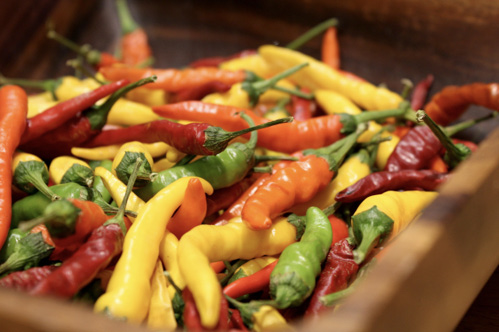
Figure 23. ‘NuMex Sunburst’, ‘NuMex Sunglo’, and ‘NuMex Sunflare’, colorful de árbol chiles used for mini-ristras.
These cultivars have an immature fruit color of green, while mature fruit color is orange, red, and yellow, respectively, for ‘NuMex Sunburst’, ‘NuMex Sunflare’, and ‘NuMex Sunglo’ (Figure 23). They are used for the popular “mini-ristras” of the Southwest. A mini-ristra is made of chiles that are smaller than the usual New Mexican pod-type chile, and are popular as tourist items because they are easier to transport than traditional New Mexican-type ristras. They were derived by pedigree breeding from a seed source from India and released in 1991 (Bosland, 1992b). Individual plants were self-pollinated in the greenhouse for five generations, and then grown and evaluated in the field for two years. They were selected for traits deemed essential for ristra use, including, but not limited to, mature fruit color, non-corkiness, pointed tip, round shoulder, attached calyx, appropriate fruit length and width, and a compact plant habit. The fruits dry down on the plant under the environmental conditions of southern New Mexico. The plants have an upright, semi-determinate, non-spreading growth habit. The fruits are pendulate, and leaves are sufficiently dense on the plant to prevent solar injury to the pods. ‘NuMex Sunglo’, ‘NuMex Sunflare’, and ‘NuMex Sunburst’ have pod lengths of 3.26, 2.87, and 2.78 inches, respectively, while pod widths are 0.54, 0.40, and 0.50 inches, respectively. The fruit sizes are in the range of the chile types known as de árbol chiles. All three cultivars are hot; however, the heat level has not been measured.
NuMex Bailey Piquin
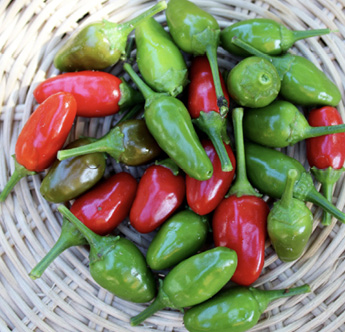
Figure 24. ‘NuMex Bailey Piquin’ pods.
This cultivar, released in 1991, was named in honor of Mr. Alton L. Bailey, NMSU Extension Vegetable Specialist Emeritus, who helped evaluate this selection (Bosland and Iglesias, 1992) (Figure 24). This machine-harvestable chile piquín originated as a single-plant selection from an open-pollinated accession collected in the Caribbean area of Mexico. The plants have an upright, semi-determinant, non-spreading growth habit and produce fruits that are upright and set high on the plant canopy. ‘NuMex Bailey Piquin’ is the first machine-harvestable piquín. It is homozygous for the deciduous fruit characteristic that allows fruit separation from the calyx at maturity. This trait allows the fruit to be shaken from the plant by a machine. A one-row harvester was developed to harvest this cultivar. It shakes the plant, and an attached conveyor belt carries the fruits to the rear of the machine for collection. Dried fruit powder has a heat level of 100,000 SHU. In trials at Las Cruces, dry fruit yield averaged 3,984 lb/acre.
NuMex Centennial
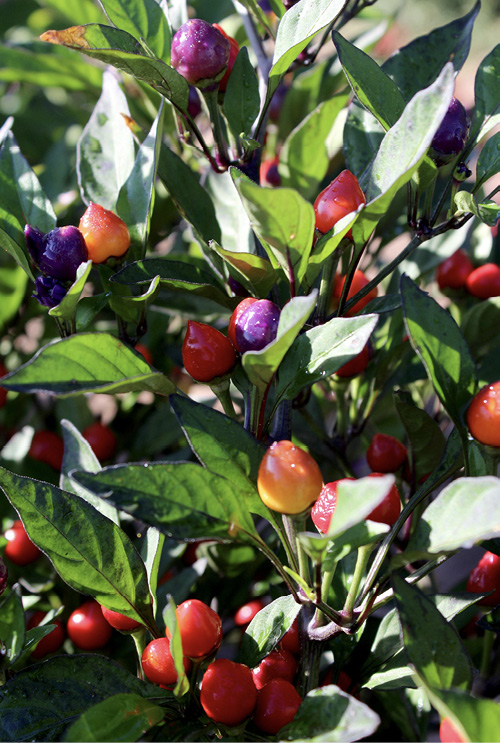
Figure 25. ‘NuMex Centennial’, an ornamental cultivar developed for NMSU’s 100-year anniversary.
‘NuMex Centennial’ was released in 1988 to celebrate NMSU’s centennial, and is the first ornamental chile released from NMSU intended to be grown in small containers (Bosland et al., 1994). Many seed companies offer seeds of this cultivar, but under different names. The semi-compact plant was developed for the commercial greenhouse industry, but it is suitable for cultivation in a formal garden bed. ‘NuMex Centennial’ has purple flowers and purpling in the foliage (Figure 25). The fruit are purple, then ripen to yellow, orange, and finally red. It was selected from a seed accession acquired from Chihuahua, Mexico.
NuMex Twilight
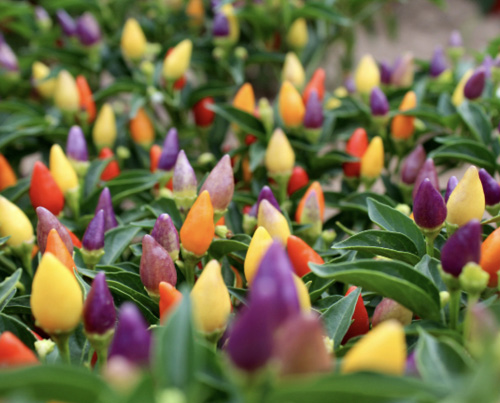
Figure 26. ‘NuMex Twilight’, an ornamental cultivar that has become one of the most popular ornamental peppers for home gardeners and botanical gardens worldwide.
This ornamental chile has fruit color that ripens from purple to yellow to orange and lastly red (Bosland et al., 1994) (Figure 26). The various fruit colors enhance their value as commercial greenhouse potted plants, and this cultivar is well accepted by the potted plant industry. Organic Gardening has named this chile “a must have plant” because standard chile cultivars have a dichotomous growth pattern, while the polychotomous branching of the basal branches of ‘NuMex Twilight’ makes these ideal for container production. The semi-compact plants were developed to be grown in small containers, but are suitable for cultivation in a formal garden bed. ‘NuMex Twilight’ has a white flower and green leaves, while ‘NuMex Centennial’ has purple flowers and purple foliage. Also, the yellow fruit color stage is more pronounced in ‘NuMex Twilight’. This cultivar has upright flower pedicels at anthesis, and fruit are upright and smooth with a cup-shaped calyx. Flowers begin to open 120 days after sowing, and fruits mature to red in an additional 96 days. The plants grow erect and have stems with no pubescence and a smooth leaf texture. Heat level and flavor have not been evaluated. Seed of ‘NuMex Twilight’ was originally from Jalisco, Mexico. The cultivar was derived from selections within the original population. ‘NuMex Centennial’ and ‘NuMex Twilight’ have been grown commercially in New Mexico as potted plants. ‘NuMex Twilight’ has also become an important source of cucumber mosaic virus (CMV) resistance for plant breeders.
NMSU Holiday Ornamentals: NuMex Valentine’s Day, NuMex St. Patrick’s Day, NuMex Memorial Day, NuMex Halloween, NuMex Thanksgiving, NuMex Christmas, NuMex Chinese New Year, NuMex Easter, NuMex April Fools’ Day, NuMex Cinco de Mayo, NuMex Earth Day, NuMex Veterans Day, NuMex Summer Solstice, and NuMex Columbus Day
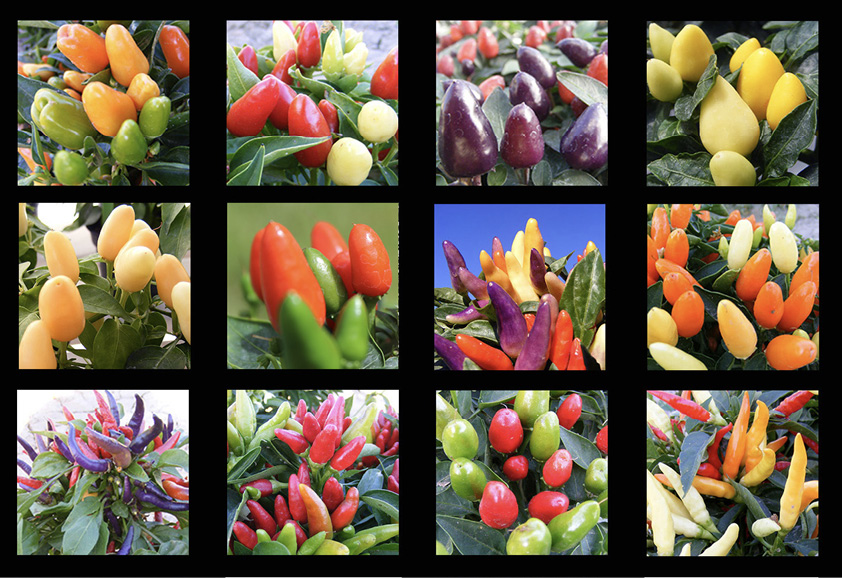
Figure 27. Top row: ‘NuMex St. Patrick’s Day’, ‘NuMex Valentine’s Day’, ‘NuMex Veterans Day’, and ‘NuMex Memorial Day’. Second row: ‘NuMex Summer Solstice’, ‘NuMex Columbus Day’, ‘NuMex Easter’, and ‘NuMex Thanksgiving’. Third row: ‘NuMex April Fools’ Day’, ‘NuMex Chinese New Year’, ‘NuMex Christmas’, and ‘NuMex Cinco de Mayo’. Not pictured: ‘NuMex Halloween’.
The NMSU Holiday Ornamental cultivars were developed for the potted plant and nursery industries. Plants were selected for horticultural characteristics that included a fuller yet compact plant growth habit, upright fruit that spread over the top of the plant, heavy fruit set, the ability to be successfully grown in pots, attractive foliage, and speedy germination (Coon et al., 2017) (Figure 27). ‘NuMex Memorial Day’ and ‘NuMex Thanksgiving’ originated from the hybridization of ‘Ivory’ by a dwarf plant in 1991. Single-plant selections were made in the F2 generation, and then seven generations of selfing of single-plant selections were made for each.
‘NuMex Valentine’s Day’, ‘NuMex St. Patrick’s Day’, ‘NuMex Halloween’, and ‘NuMex Christmas’ are from the hybridization of ‘Black Prince’ by ‘NuMex Thanksgiving’ in 1995. Single-plant selections were made in the F2 generation, and five generations of selfing and subsequent single-plant selections were made. Color transitions and pod shapes are ivory to red with bullet-shaped pods for ‘NuMex Valentine’s Day’, light green to orange with a more rounded pod for ‘NuMex St. Patrick’s Day’, ivory to lemon-yellow with a round pod for ‘NuMex Memorial Day’, black to orange with bullet-shaped pods for ‘NuMex Halloween’, ivory to orange with bullet-shaped pods for ‘NuMex Thanksgiving’, and dark green to red with bullet-shaped pods for ‘NuMex Christmas’. ‘NuMex April Fools’ Day’ and ‘NuMex Cinco de Mayo’ are both semi-dwarf ornamental plants with upright, de árbol-like pods. ‘NuMex April Fools’ Day’ starts purple and turns to red, while ‘NuMex Cinco de Mayo’ starts yellow, turns to orange, and matures to red. ‘NuMex Easter’ is a fasciculate semi-dwarf ornamental chile pepper with bullet-shaped pods that turn from pastel purple to yellow and mature to orange. ‘NuMex Chinese New Year’ is a fasciculate dwarf plant that has clusters of upright pods that turn from lime-green to red. ‘NuMex Veterans Day’ is a dwarf plant that has upright pods that change from purple to burnt orange. ‘NuMex Earth Day’ is a dwarf plant that has upright pods that change from green to brown. ‘NuMex Summer Solstice’ is a dwarf plant that has upright pods that change from ivory to pale salmon. ‘NuMex Columbus Day’ is a dwarf plant that has upright pods that change from green to orange-red.
NuMex Twinkle
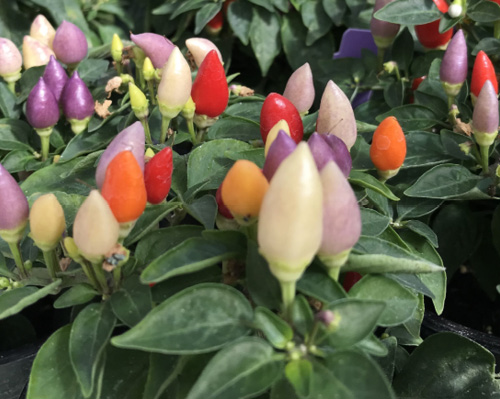
Figure 28. ‘NuMex Twinkle’, a dwarf ornamental chile pepper cultivar.
‘NuMex Twinkle’ originated from the hybridization of two ornamental chile pepper cultivars—‘NuMex Thanksgiving’ and ‘NuMex Twilight’—using a backcross pedigree method. Selections for each generation were conducted for traits such as plant height and width, fruit length and width, fruit color, and other traits relevant to the nursery and potted plant industries. Although initially developed to be grown in pots, ‘NuMex Twinkle’ can also be cultivated in standard garden beds. ‘NuMex Twinkle’ is a dwarf ornamental chile pepper cultivar with a pod color transition that starts with purple, changes to yellow, then orange, and ends with a mature fruit color of red (Figure 28). It has a rounded bullet-type pod shape smaller than ‘NuMex Twilight’. ‘NuMex Twinkle’ plants average 4.5 inches tall and 5.3 inches wide when grown in 4-inch nursery pots, with dark green foliage and white flowers. Days to maturity are 130. Heat levels were not measured for ‘NuMex Twinkle’ because it will mainly be used for ornamental purposes.
NuMex Mirasol
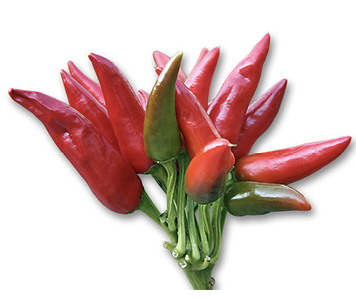
Figure 29. ‘NuMex Mirasol’, a cultivar used in ornamental wreaths and ristras.
This cultivar got its name from the Spanish word mirasol, which means “looking at the sun,” because the fruit are erect and point upward. ‘NuMex Mirasol’ was developed over six years using a pedigree breeding method that included hybridization and repeated single-plant selections, and was released by Dr. Bosland and Dr. Max Gonzalez in 1993. It originated from a hybridization between ‘La Blanca’ and ‘Santaka’. Selection was carried out for upright fruit, fruit size and color, the number of fruit per cluster, and the number of clusters per plant. At maturity, it is a multi-stemmed bush 23.8 inches tall and 15.3 inches wide. The fruit is green when immature and turns red at maturity (Figure 29). The fruits are hot. Each plant produced an average of 16 fruit clusters per plant, with four fruits per cluster. Fruits are 2.17 inches long and 0.75 inch wide. The fruits are cone-shaped and have two locules. ‘NuMex Mirasol’ is used both as an ornamental on wreaths and as a floral type, and the dried red fruit is ground into powder for use in cooking.
NuMex Nematador
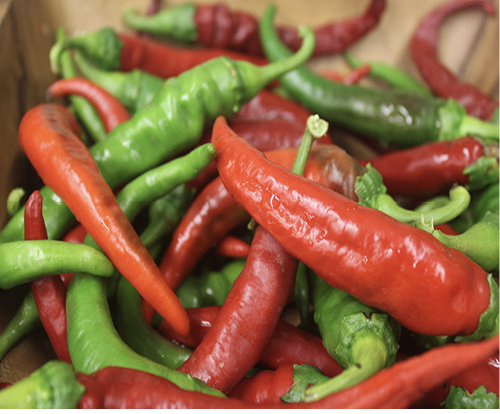
Figure 30. ‘NuMex Nematador’, an improved and nematode-resistant cayenne cultivar.
‘NuMex Nematador’ is an open-pollinated, nematode-resistant, cayenne-type chile that was released in 2003 (Bosland et al., 2003). Cayenne production in New Mexico was valued in excess of $2.3 million in 2003 (NMAS, 2003) because of the demand for cayenne mash, the core ingredient in hot sauce. ‘NuMex Nematador’ is adapted to southern New Mexico growing conditions and provides resistance to the southern root-knot nematode, a major pest for cayenne producers. ‘NuMex Nematador’ was developed from the cultivar ‘Large Red Thick’ and was evaluated for yield, heat level, desirable fruit characteristics, plant growth habits, and level of nematode resistance. ‘NuMex Nematador’ took an average of 99 days to first harvest from time of transplanting. Average fruit width was 0.6 inch, fruit length was 5.8 inches, and heat level was rated at 16,000 SHU (Figure 30).
NuMex Las Cruces
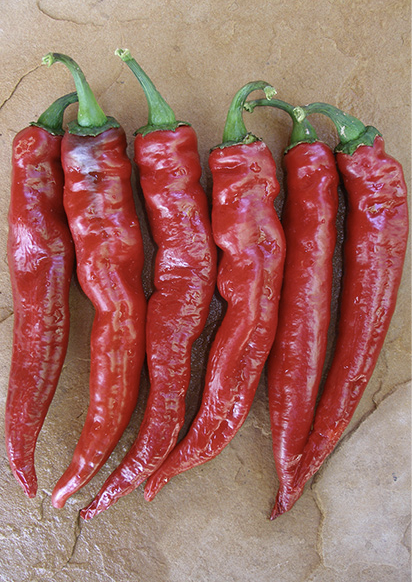
Figure 31. ‘NuMex Las Cruces’, an improved high-yielding cayenne cultivar.
‘NuMex Las Cruces’ is a high-yielding, high-heat cayenne pepper with a maturity similar to that of ‘Large Red Thick’, an early maturing cayenne cultivar. In replicated trials in 2005–2007, ‘NuMex Las Cruces’ fruit length (6.7 inches) was not significantly different from ‘Large Red Thick’ and ‘Mesilla’. Fruit width of ‘NuMex Las Cruces’ is most similar to ‘Mesilla’ (1 inch), and both are wider than ‘Large Red Thick’. Individual pod weight for ‘NuMex Las Cruces’ (1 ounce) is between ‘Large Red Thick’ and ‘Mesilla’. Hand removal of the pedicel and calyx was rated “easy,” and ripe mature pod color of ‘NuMex Las Cruces’ was scarlet (Figure 31). The heat level of ‘NuMex Las Cruces’ was determined at 17,400 SHU, which is significantly hotter than ‘Large Red Thick’ (12,900 SHU) or ‘Mesilla’ (13,200 SHU) and therefore well suited for the cayenne mash industry for hot sauce production. The average yield over a three-year period was 50% higher than ‘Large Red Thick’, the standard open-pollinated cultivar grown in the southern New Mexico production area. ‘NuMex Las Cruces’ yielded as well as the high-yielding F1 hybrid ‘Mesilla’.
NuMex Suave Red and NuMex Suave Orange
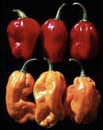
Figure 32. ‘NuMex Suave Red’ and ‘NuMex Suave Orange’, the first mild habanero cultivars on the market.
‘NuMex Suave Red’ and ‘NuMex Suave Orange’, released in 2004, originated from a habanero pod-type seed lot that was acquired by the NMSU Chile Breeding and Genetics Program from W.D. Adams, who commented on their mild nature (Votava and Bosland, 2004). He received seed from an anonymous individual who called the seeds Aji red and Aji yellow. The exact origins of these two accessions are unknown; however, they exhibit phenotypic similarities to other Capsicum chinense pod-types. Based on the large size of the fruits, these cultivars must have originated from local or landrace varieties. Replicated field plot trials were performed in 2002 and compared to other habanero-type cultivars. ‘NuMex Suave Red’ and ‘NuMex Suave Orange’ are significantly milder than any other cultivar of C. chinense, with heat levels of 774 and 335 SHU, respectively. Fruit characteristics are similar to other habanero cultivars, including fruit weight, length, and width (Figure 32), while the plants are much taller and wider than other habanero cultivars.
NuMex Trick-or-Treat

Figure 33. ‘NuMex Trick-or-Treat’, a no-heat habanero cultivar.
‘NuMex Trick-or-Treat’ originated from a hybridization between ‘Orange Habanero’ and a no-heat C. chinense accession from Colombia (Bosland and Coon, 2015b). The Colombian accession matures to a red color and has a lantern-shaped pod reminiscent of ‘Orange Habanero’. A pedigree breeding method that included a backcross to ‘Orange Habanero’ and four generations of single-plant selection from subsequent generations was accomplished in a greenhouse. In replicated trials, ‘NuMex Trick-or-Treat’ did not differ significantly from ‘Orange Habanero’ in plant height or plant width. The yield of ‘NuMex Trick-or-Treat’ averages 6,940 lb/acre and is not significantly different from ‘Orange Habanero’ yield of 6,872 lb/acre. Small differences in fruit width, fruit length, and wall thickness are observed between ‘NuMex Trick-or-Treat’ and ‘Orange Habanero’. The pods of both cultivars mature to similar orange colors (Figure 33). No discernible heat was detected in ‘NuMex Trick-or-Treat’ by the organoleptic test and by the HPLC method, while the average heat level for ‘Orange Habanero’ is 300,000 SHU on a dry weight basis. The flavor and aroma of ‘NuMex Trick-or-Treat’ are equal to—or better than—‘Orange Habanero’.
NuMex NoBasco

Figure 34. ‘NuMex Nobasco’, a no-heat Tabasco-type cultivar.
‘NuMex NoBasco’ originated from a hybridization between ‘Tabasco’ and a no-heat Capsicum frutescens accession from Colombia (CATIE 9838). Immature CATIE 9838 fruit are greenish when immature and mature to red, whereas ‘Tabasco’ has yellow immature fruit that mature to red (Figure 34). A pedigree breeding method that included several backcrosses to ‘Tabasco’ followed by seven generations of single-plant selfed selections produced the subsequent breeding line. During each generation, selection for horticultural traits that were similar to the phenotype of ‘Tabasco’ was accomplished. No discernible heat was detected in ‘NuMex NoBasco’ by the organoleptic test and by the HPLC method.
NuMex LotaLutein

Figure 35. ‘NuMex LotaLutein’, a high-lutein serrano-type cultivar.
‘NuMex LotaLutein’ originated from a segregating population at the NMSU Leyendecker Plant Science Research Center. The population produced segregating lines of mature fruit that were red, yellow, and orange. Single-plant selection using phenotypic recurrent selection with pedigree breeding was made for earliness, desirable fruit shape, fruit size, and yield. Within the segregating generations, five single-plant selections were made. During each generation of selection, phenotypic traits considered to be important to a serrano pod-type were selected. In 2015, these breeding lines were analyzed using HPLC to quantify carotenoids. Five lines were found to have uniquely high amounts of lutein and no beta-carotene. These lines were carried forward, and one breeding line was analyzed as the line with the highest percentage of lutein. This line subsequently became ‘NuMex LotaLutein’. ‘NuMex LotaLutein’ has light green immature pods that turn to bright yellow when mature (Figure 35). The average pod length is 2.4 inches and average pod width is 0.5 inch. Flavors for ‘NuMex LotaLutein’ are consistent with traditional serrano pepper flavors, and are slightly sweeter when harvested in the yellow stage. The heat was calculated to be 31,500 SHU.
NuMex CaJohns

Figure 36. ‘NuMex CaJohns’, a jumbo serrano-type cultivar.
‘NuMex CaJohns’ originated from a segregating population at the NMSU Leyendecker Plant Science Research Center. The population produced segregating lines of mature fruit that were much larger than standard-size serrano peppers. Single-plant selection using phenotypic recurrent selection with pedigree breeding for earliness, desirable fruit shape and size, yield, and ease of destemming was accomplished. During each generation of selection, phenotypic traits considered to be important to a serrano pod-type were selected. ‘NuMex CaJohns’ serrano has dark green pods that average 4.5 inches long and 0.75 inches wide (Figure 36). Flavor of the fruit is consistent with traditional serrano chile pepper flavor profiles. The heat is in the low range for serrano-type chile peppers and was calculated to be 3,500 SHU.
REFERENCES
American Spice Trade Association. 1997. Method 20.1, extractable color in Capsicums and their oleoresins (revised October 2004). In Official Analytical Methods of the American Spice Trade Association (p. 89). Washington, D.C.: Author.
Bosland, P.W. 1992a. Chiles: A diverse crop. HortTechnology, 2(1), 1–10.
Bosland, P.W. 1992b. ‘NuMex Sunglo’, ‘NuMex Sunflare’, and ‘NuMex Sunburst’ ornamental chile peppers. HortScience, 27(12), 1341–1342.
Bosland, P.W. 2010a. ‘NuMex Jalmundo’ jalapeño. HortScience, 45(3), 443–444.
Bosland, P.W. 2010b. ‘NuMex Vaquero’ jalapeño. HortScience, 45(10), 1552–1553.
Bosland, P.W. 2012. ‘NuMex Heritage 6-4’ New Mexican chile pepper. HortScience, 47(5), 675–676.
Bosland, P.W. 2015. The history, development, and importance of the New Mexican pod-type chile pepper to the United States and world food industry. In J. Janick (Ed.), Plant Breeding Reviews, vol. 39 (pp. 283–323). Hoboken, NJ: John Wiley & Sons, Inc.
Bosland, P.W., and D. Coon. 2013. ‘NuMex Heritage Big Jim’ New Mexican chile pepper. HortScience, 48(5), 657–658.
Bosland, P.W., and D. Coon. 2014. ‘NuMex Sandia Select’ New Mexican chile pepper. HortScience, 49(5), 667–668.
Bosland, P.W., and D. Coon. 2015a. ‘NuMex Lemon Spice’, ‘NuMex Orange Spice’, and ‘NuMex Pumpkin Spice’ jalapeños. HortScience, 50(7), 1104–1105.
Bosland, P.W., and D. Coon. 2015b. ‘NuMex Trick-or-Treat’, a no-heat habanero pepper. HortScience, 50(11), 1739–1740.
Bosland, P.W., and J. Iglesias. l992. ‘NuMex Bailey Piquin’ chile pepper. HortScience, 27(8), 941–942.
Bosland, P.W., and M.M. Gonzalez. 1994. ‘NuMex Mirasol’ chile. HortScience, 29(9), 1091.
Bosland, P.W., and C.A. Strausbaugh. 2010. ‘NuMex Las Cruces’ cayenne pepper. HortScience, 45(11), 1751–1752.
Bosland, P.W., and E.J. Votava. 1998. ‘NuMex Primavera’ jalapeño. HortScience, 33(6), 1085–1086.
Bosland, P.W., and S. Walker. 2014. Growing chiles in New Mexico [Guide H-230]. Las Cruces: New Mexico State University Cooperative Extension Service.
Bosland, P.W., A.L. Bailey, and J. Iglesias. 1988. Capsicum pepper varieties and classification [Circular 530]. Las Cruces: New Mexico State University Cooperative Extension Service.
Bosland, P.W., J. Iglesias, and M.M. Gonzalez. 1993a. ‘NuMex Joe E. Parker’ chile. HortScience, 28(4), 347–348.
Bosland, P.W., J. Iglesias, and M.M. Gonzalez. 1993b. ‘NuMex Sweet’ paprika chile. HortScience, 28(8), 860–861.
Bosland, P.W., J. Iglesias, and M.M. Gonzalez. 1994. ‘NuMex Centennial’ and ‘NuMex Twilight’ ornamental chiles. HortScience, 29(9), 1090.
Bosland, P.W., J. Iglesias, and S.D. Tanksley. 1990. ‘NuMex Sunrise’, ‘NuMex Sunset’, and ‘NuMex Eclipse’ ornamental chile peppers. HortScience, 25(7), 820–821.
Bosland, P.W., J. Iglesias, and S.D. Tanksley. 1991. ‘NuMex Conquistador’ paprika pepper. HortScience, 26(2), 215–216.
Bosland, P.W., Y. Zewdie, and S.H. Thomas. 2003. ‘NuMex Nematador’, southern root-knot nematode-resistant cayenne chile. HortScience, 38(4), 631–632.
Collins, M.D., L. Mayer-Wasmund, and P.W. Bosland. 1995. Improved method for quantifying capsaicinoids in Capsicum using high-performance liquid chromatography. HortScience, 30(1), 137–139.
Coon, D., and S. Walker. 2015. Using chile to make ristras and chile sauce [Guide E-327]. Las Cruces: New Mexico State University Cooperative Extension Service.
Coon, D., D.W. Barchenger, and P.W. Bosland. 2017. Evaluation of dwarf ornamental chile pepper cultivars for commercial greenhouse production. HortTechnology, 27(1), 128–131.
Garcia, F. 1921. Improved variety No. 9 of native chile [Bulletin 124]. Las Cruces: New Mexico College of Agriculture and Mechanic Arts, Agricultural Experiment Station.
Harper, R.E. 1950. An improved variety of chile for New Mexico [Press Bulletin 1041]. Las Cruces: New Mexico College of Agriculture and Mechanic Arts, Agricultural Experiment Station.
Harper, R.E. 1967. Notice of the naming and release of Rio Grande, a medium pungent chile pepper variety for New Mexico. Las Cruces: New Mexico State University Agricultural Experiment Station.
Matta, F.B., and R.M. Nakayama. 1984. ‘Española Improved’ chile pepper. HortScience, 19(3), 454.
Nakayama, R. 1975. Notice of the naming and release of ‘NuMex Big Jim’, a semi-mild pungent chile variety for New Mexico. Las Cruces: New Mexico State University Agricultural Experiment Station.
Nakayama, R.M., and F.B. Matta. 1985. ‘NuMex R Naky’ chile pepper. HortScience, 20(5), 961–962.
New Mexico Agricultural Statistics. 2003. United States Department of Agriculture, New Mexico Statistics Office (p. 59), Las Cruces, NM.
Votava, E.J., and P.W. Bosland. 1998. ‘NuMex Piñata’ jalapeño chile. HortScience, 33(2), 350.
Votava, E.J., and P.W. Bosland. 2004. ‘NuMex Suave Red’ and ‘NuMex Suave Orange’ mild Capsicum chinense cultivars. HortScience, 39(3), 627–628.
Votava, E.J., D. Coon, C. Balok, and P.W. Bosland. 2000. Inheritance of unique fruit and foliage color mutation in NuMex Piñata. Journal of Heredity, 91(1), 60–61.
Walker, S. 2015. ‘NuMex R. Vince Hernandez’ paprika-type chile. HortScience, 50(12), 1820–1821.
Walker, S., and C. Havlik. 2016. The landrace chiles of northern New Mexico [Circular 679]. Las Cruces: New Mexico State University Cooperative Extension Service.
Walker, S., M.M. Wall, and P.W. Bosland. 2004. ‘NuMex Garnet’ paprika. HortScience, 39(3), 629–630.
Walker, S.J., P. Funk, I. Joukhadar, T. Place, C. Havlik, and B. Tonnessen. 2021. ‘NuMex Odyssey’, a New Mexico-type green chile pepper for mechanical harvest. HortScience, 56(12), 1605–1607.
For further reading
H-230: Growing Chiles in New Mexico
https://pubs.nmsu.edu/_h/H230/index.html
H-235: Postharvest Handling of Fresh Chiles
https://pubs.nmsu.edu/_h/H235/index.html
H-236: Postharvest Handling of Dehydrated Chiles
https://pubs.nmsu.edu/_h/H236/index.html
H-237: Measuring Chile Pepper Heat
https://pubs.nmsu.edu/_h/H237/index.html
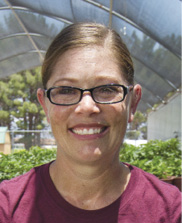
Danise Coon is the Senior Research Specialist for the NMSU Chile Breeding Program. She earned her M.S. at New Mexico State University. Her research focuses on chile pepper cultivar development, development of disease-resistant chile pepper cultivars, and development of chile pepper cultivars that will help New Mexico’s industry thrive in an ever-changing market.
To find more resources for your business, home, or family, visit the College of Agricultural, Consumer and Environmental Sciences on the World Wide Web at pubs.nmsu.edu.
Contents of publications may be freely reproduced, with an appropriate citation, for educational purposes. All other rights reserved. For permission to use publications for other purposes, contact pubs@nmsu.edu or the authors listed on the publication.
New Mexico State University is an equal opportunity/affirmative action employer and educator. NMSU and the U.S. Department of Agriculture cooperating.
February 2023 Las Cruces, NM


